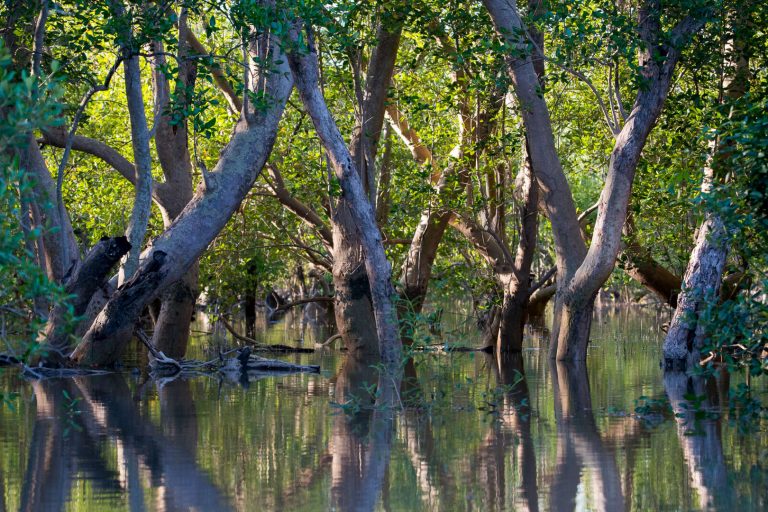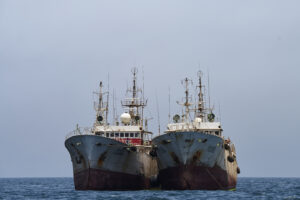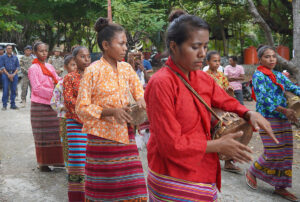The vital importance of coastal wetland conservation and restoration has been recognised with the validation of the first Verified Carbon Standard (VCS) methodology for blue carbon conservation. The methodology will provide a new framework to help conservationists deploy climate finance to blue carbon conservation − a potent natural solution in the fight against climate breakdown. The methodology, launched earlier this month, draws on lessons learned from Blue Ventures’ work developing locally led blue carbon conservation initiatives.
Blue carbon is the term given to carbon found in the ocean. This includes coastal wetlands such as intertidal mangrove forests and seagrass meadows. These habitats can reduce atmospheric carbon dioxide emissions by drawing down carbon and locking it away in their biomass and sediments. Despite their importance these ecosystems are at risk, with mangrove forests being lost at a rate of up to 2% per year.
This methodology enables the preservation and restoration of these coastal ecosystems, and the resulting avoided carbon emissions, to be formally recognised and monetised through the world’s most widely used voluntary carbon standard. While other blue carbon certification schemes already exist such as the Plan Vivo standard, whose verification system has been adopted by the world’s first mangrove blue carbon conservation projects − Kenya’s Mikoko Pimoja and Madagascar’s Tahiry Honko – the VCS methodology provides new impetus and a wider market potential for blue carbon than ever before.
Coastal communities living in the tropics are some of the most vulnerable people on the planet, facing myriad challenges, including being disproportionately impacted by climate change despite often having done little to cause it. This step forward in climate finance will not only help to prioritise natural climate solutions, but could also bolster the resilience of communities through diversifying livelihoods and creating new income streams.
“The validation of this revised VCS methodology is an important moment for blue carbon. By fully recognising the carbon benefit of protecting coastal wetlands, we can incentivise the conservation and management of biodiverse mangrove and seagrass ecosystems, a pathway to safeguarding natural climate solutions and increasing the resilience of coastal people in the face of climate breakdown. We’re grateful for our brilliant colleagues and partners at Restore America’s Estuaries, Silvestrum Climate Associates and Conservation International, as well as the authors, for ensuring that this important revision was completed.” Leah Glass, Blue Ventures’ Technical Advisor for Mangroves and Blue Carbon
Blue Ventures is a pioneer in harnessing the value of blue carbon to catalyse locally led conservation, supporting villages in southwest Madagascar to establish Tahiry Honko, the world’s largest community-led mangrove carbon conservation project. Partnerships across the Indian Ocean are now working to replicate blue carbon projects that strengthen social and ecological resilience.
These conservation projects have been supported by the UK Government’s International Climate Fund part of the UK commitment to developing countries to help them address the challenges presented by climate change and benefit from the opportunities.
Learn more about the new methodology
Find out more about Blue Forests























